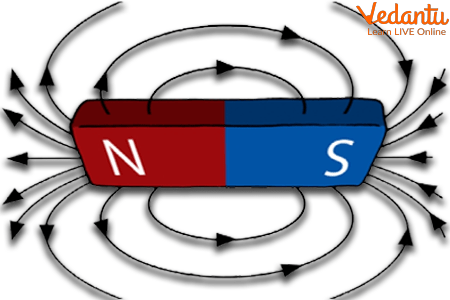




An Overview of a Pole
Science is our understanding of how the world functions, and whether or not we grasp it. People have been utilising magnets practically as compasses for almost as long as they have been aware of magnets, which date back thousands of years.

Magnetic Poles
It is nice to play with magnets. You seem to be wielding a magic wand! Magnets are objects made of metal or rock that have the uncanny ability to draw certain types of metal. We refer to that strength as a force. A force is something that pushes or pulls in the natural world. The force that prevents you from floating off the earth is gravity. A magnet sticks to your refrigerator thanks to magnetism.
Types of Poles of a Magnet
So now the question arises, how many poles does a magnet have? So there are two poles in a magnet. The two poles of the magnet are the north and south poles. The poles of a magnet are its ends. The pole at the beginning or end is called the North Pole and the other is called the South Pole. Two magnets will attract one another if you position them so that their south poles are facing each other's north poles. Attraction is what we call this.

Poles of a Magnet
The magnets will push apart if you arrange the magnets so that two of the same poles are facing one another. Repulsion is the word for this. Similar poles repel one another whereas opposite poles attract.
North and South Pole Magnets
A north magnetic pole is any pole that seeks the north, such as the north-seeking pole of this type of magnet. A south magnetic pole is the south-seeking pole or any pole that resembles it. Different magnets, unlike poles, pull together while their similar poles repel one another.

North and South Pole of a Magnet
Our planet has a magnetic field because it resembles a large magnet. The magnetic field of the Earth shields humans from solar radiation. Northern and southern lights are colourful light displays that occur naturally at the North and South poles. Sprays of energy from the sun colliding with the Earth's magnetic field results in these lights.
Attracting Magnets Vs Opposite Magnets
There are north and south poles on every magnet. Two poles that are incompatible with one another are drawn together. The North and south poles will reject one another if you try to align them in these directions. A magnetic field that is unseen but contains potential energy surrounds the magnets.

Attracting Magnets and Opposite Magnets
The Magnets, say, the North Pole of a magnet when brought in contact with the South Pole of another magnet attracts each other. So, this is known as attracting magnets. Similarly, say, the North Pole of a magnet when brought in contact with the North Pole of another magnet opposes each other. So, these are known as opposite magnets.
Uses of Magnets
Magnets are used in many different ways in our daily lives, even in some unexpected areas! Here are a few uses for magnets:
Electricity can affect magnets, which makes them an extremely important component of machines and computers.
The doors to refrigerators and freezers are sealed tightly by magnets. They provide electricity for televisions, earbuds and stereo speakers.
In addition to being crucial components of MRIs, which are scanning devices used by doctors to examine patients' internal organs, magnets are also used in computers to store data.
Summary
A magnet is a natural or man-made structure that can create a magnetic field all around it. A magnet's magnetic field causes it to attract or repel other magnets and ferromagnetic elements like iron filings. The north-south direction is always pointed in the direction of magnets hanging through a string.
Now, at the end of this article, we can answer questions like how many poles a magnet has, one can name the two poles of the magnet, the uses of magnets, north and south pole magnets and many more.
FAQs on The Poles of a Magnet
1. Is the Sun a magnet?
The Sun, like our planet, is a gigantic bar magnet with a north and south pole that produces a magnetic field. However, the Sun's magnetic field is roughly twice as strong as the Earth's and much, much larger, stretching well beyond the solar system's farthest planet.
2. Which is a natural magnet?
Magnetite is a mineral that belongs to the spinel group and is one of the three most prevalent naturally occurring iron oxides. Magnetite is the most magnetic naturally found mineral on the planet. It acts as a natural magnet.
3. Where are magnets found?
Magnets can be found in a variety of objects and places, including toys, cabinet hardware, ornamental pieces placed on refrigerators and other objects and sites.









